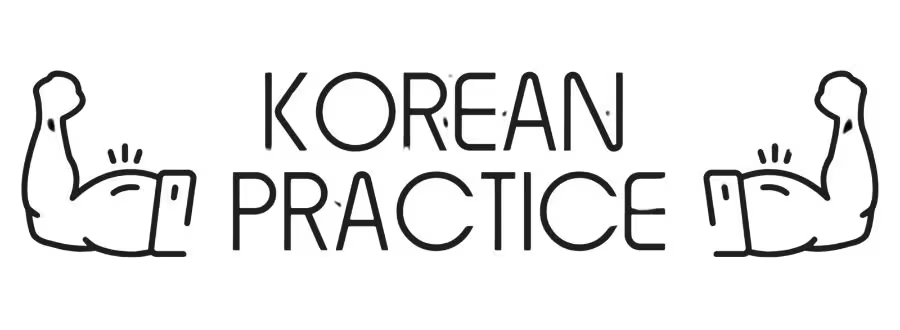Suh ChangWhoon
Written by 서 창훈, a certified Korean teacher with 14+ years of experience in Japan. He previously worked as a government officer, cybersecurity consultant, and English interpreter. Today, he teaches Korean in real classrooms without complex grammar explanations — instead, he trains students’ brains to speak naturally. His unique method is now the foundation of all his Korean courses.
Table of Contents
- Today, I uploaded a new video lesson designed to help you improve your Korean reading and listening skills:
- Enjoy Korean Speed Reading Practice – 즐거운 일요일
- If you’ve ever felt frustrated by slow reading or slow thinking in Korean, this post is for you. Let’s talk about how to read Korean faster, and why it matters.
- In this new lesson, I’ve designed a 4-step training method that includes:
Korean shadowing practice – Listen and repeat
Reading practice with voice – Follow along with audio
Sentence breakdowns – Understand grammar and meaning
Final listening – Train fluency and comprehension
- In this post, I want to explain how to read Korean faster — especially stories — is the best way to learn Korean.
Why Reading Is the Best Language Learning Method
As a Korean teacher, I believe that reading is the single best method for learning a foreign language. Especially reading stories. Why?
Because in one short story, you can learn:
Vocabulary and idioms
Sentence structure and pronunciation
Cultural references and emotional nuance
This is true immersion. When you read Korean every day, you expose your brain to the rhythm and logic of the language.
Also, reading doesn’t make you nervous. Unlike speaking with a native, where you might feel shy or pressured, books never judge you. You can read again and again without fear.

How to Read Korean Faster (Step-by-Step)
Whether you’re a beginner or intermediate learner, improving your Korean reading speed will help you speak, listen, and understand better.
There are two powerful strategies: Slow reading for understanding, and speed reading for fluency. You need both.
1. Slow Reading for Understanding
Slow reading is about quality over speed. You read carefully to understand grammar, vocabulary, and sentence structure. Here’s how to do it effectively:
✅ Step-by-step Guide:
Choose a short passage
Start with 3–5 sentences from a story, blog, or dialogue.Read aloud slowly
This helps you connect written and spoken Korean.Break down each sentence
Ask yourself:What is the subject, verb, and object?
Which grammar patterns are used?
Are there any particles or connectors I recognize?
Highlight unknown words
Look up their meanings and try to guess based on context.Write your own translation
This reinforces sentence structure and meaning.Repeat the passage
Read again after you understand everything. You’ll notice it feels smoother.
Tip:
Try writing your own version of the sentence using different vocabulary but the same grammar structure.
Most Korean courses stop at grammar. Mine goes further — stories, breakdowns, and actual practice to make you speak.
2. Speed Reading for Fluency
Speed reading is about training your brain to process Korean quickly, like a native speaker. You don’t need to understand every word — the goal is to increase comprehension speed and intuition.
✅ Step-by-step Guide:
Pick a familiar passage
It can be one you already studied through slow reading.Set a timer
Give yourself 30–60 seconds to read the whole thing quickly.Don’t stop
If you hit a word you don’t know, skip it. Focus on speed and flow.Read out loud if possible
This improves your pronunciation and rhythm.Repeat 2–3 times
Each time, aim to read faster while still understanding the general meaning.Challenge yourself
Gradually increase the difficulty and length of texts.
Tip:
Record yourself while speed reading and listen back. This helps you notice areas where your fluency can improve.
3. Combine Both Styles for Maximum Benefit
The real magic happens when you combine slow reading for deep understanding and speed reading for fluency training. For example:
In the morning: Practice slow reading with a new story.
At night: Do speed reading with the same story for fluency and confidence.
Why Korean Speed Reading Works
When you practice Korean speed reading, something amazing happens. Your brain starts connecting words faster. You think in Korean. And one day, you’ll notice:
“My mouth is speaking Korean before I even think!”
That’s the effect of reading quickly, every day. It’s not magic — it’s brain training.
Extra Practice Ideas
Shadow reading: Listen to native audio while reading along.
Dictation: Listen and write what you hear. Then compare it to the original text.
Reading journals: Write a short summary or reflection after reading.
Reading = Real Immersion
You don’t need to travel to Korea to experience Korean language immersion.
If you read Korean every day — stories, conversations, articles — you are already immersing yourself in the language.
And when you combine reading with listening and shadowing (as in today’s video), your brain starts working in Korean naturally.
Most Korean courses stop at grammar. Mine goes further — stories, breakdowns, and actual practice to make you speak.
Final Thoughts
If you want to speak better Korean, don’t just memorize words — read stories.
Reading builds grammar, vocabulary, listening, and pronunciation — all in one.
Start today by combining slow reading for understanding with speed reading for fluency. Test yourself, train consistently, and your speaking will naturally improve.
Sign up for my newsletter and get
📖 Korean short stories
🎧 Listening practice with audio
❓ Vocabulary and grammar quizzes
🎁 Free courses
📝 Blog updates
– all delivered straight to your inbox!








